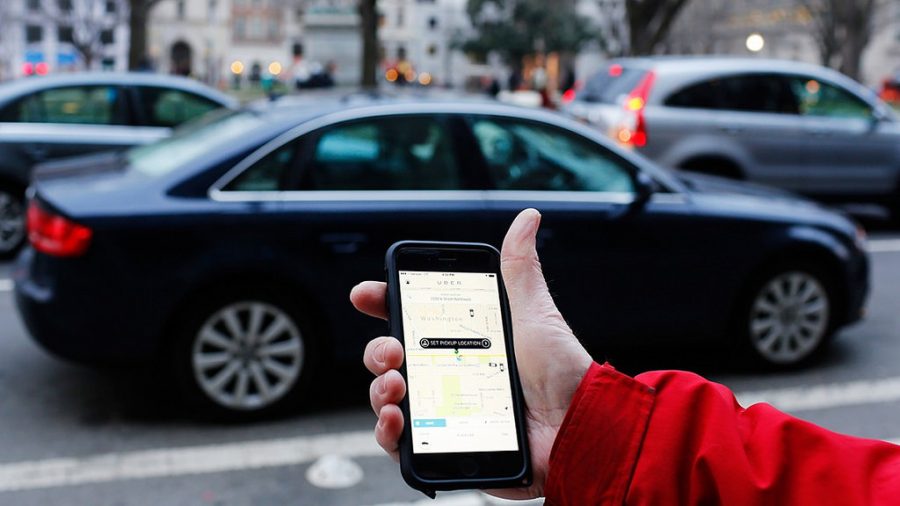Ride-Share Safety: Why Your Parents Don’t Like Uber
Ride-share application regulations questioned after student’s death.
April 16, 2019
This past week a 21-year-old college student Samantha Josephson, from the University of South Carolina, got into the wrong Uber after leaving a bar. She was found dead the next afternoon.
Her murder has sparked conversation regarding the safety of the popular ride-sharing apps, such as Uber and Lyft.
Ride-sharing was not a thing when I was growing up, actually, quite the opposite. Parents highly warned us about talking to strangers so I can’t image how that generation feels that we are now actively getting into strangers’ cars.
I personally don’t use apps like Uber or Lyft often as I tend to just prefer to drive myself to my destination; however, there have been times when a ride-share was needed. To be honest, it makes me anxious. The idea of getting into a stranger’s car is nerve-wracking and I am curious as to how these apps became so popular. Somewhere between generations, we have lost our sense of “stranger danger.”
Josephson’s death isn’t the first ride-share death that has occurred. Take Uber, for example,. The company has seen multiple incidents where their drivers have been assaulted or killed while driving. In 2017, a Chicago teenager was accused of killing her Uber driver with a machete she allegedly stole from Walmart.
On both ends of the ride-sharing business, there is apparent danger. Josephson’s murder has sparked conversation regarding how to increase safety when getting into a stranger’s car. South Carolina Legislature has introduced a bill that would require Uber and Lyft drivers to display an illuminated sign on their window. The “Samantha L. Josephson Ride sharing Safety Act” calls for drivers to “possess and display certain illuminated signage at all time when the TNC (transportation network companies) driver is active.”
Until bills like the one proposed pass, it is important to take it upon yourself to stay safe if you are using apps such as Uber and Lyft. College students are amongst the highest demographic groups that use ride-share apps, as many don’t have cars. On their blog, Uber specifically targets college students saying, “Uber is here for the college student on the go.”
Here are some tips for staying safe while riding with ride-shares:
When you order a ride, either through Uber or Lyft, the app will send you information on the driver, the make and model of the car, as well as the color. Check this. I can’t begin to tell you how many times I have seen people just walk up to a stranger’s car and almost get in thinking it’s their ride-share.
The couple of times I have taken an Uber, I am that person who walks to both ends of the car, phone in hand, checking that the license plate matches.
The driver is aware of who they are picking up. Ask them and don’t say your name first. If they say a name that is not yours, it is not your car. Don’t get in.
If possible, wait inside for your ride and avoid waiting on dark streets or places that are unlit. Also try to stay in contact with someone throughout your ride. Let a friend or family member know your estimated time of arrival or the route that your driver is taking. Having someone know your whereabouts is never a bad thing.
When you get in the car, check the doors. Glance to make sure the child safety lock is not turned on. You should be able to easily exit the car at any point should you feel unsafe or in danger.
Josephson’s death is extremely sad to read about but hopefully it serves as a cautionary tale for the new generations that are comfortable with getting in strangers’ cars. We shouldn’t wait for another college student to be killed until we pay attention to how to keep ourselves safe. We all need to be more cautious about it. There is a reason why our parents taught us “stranger danger.”






